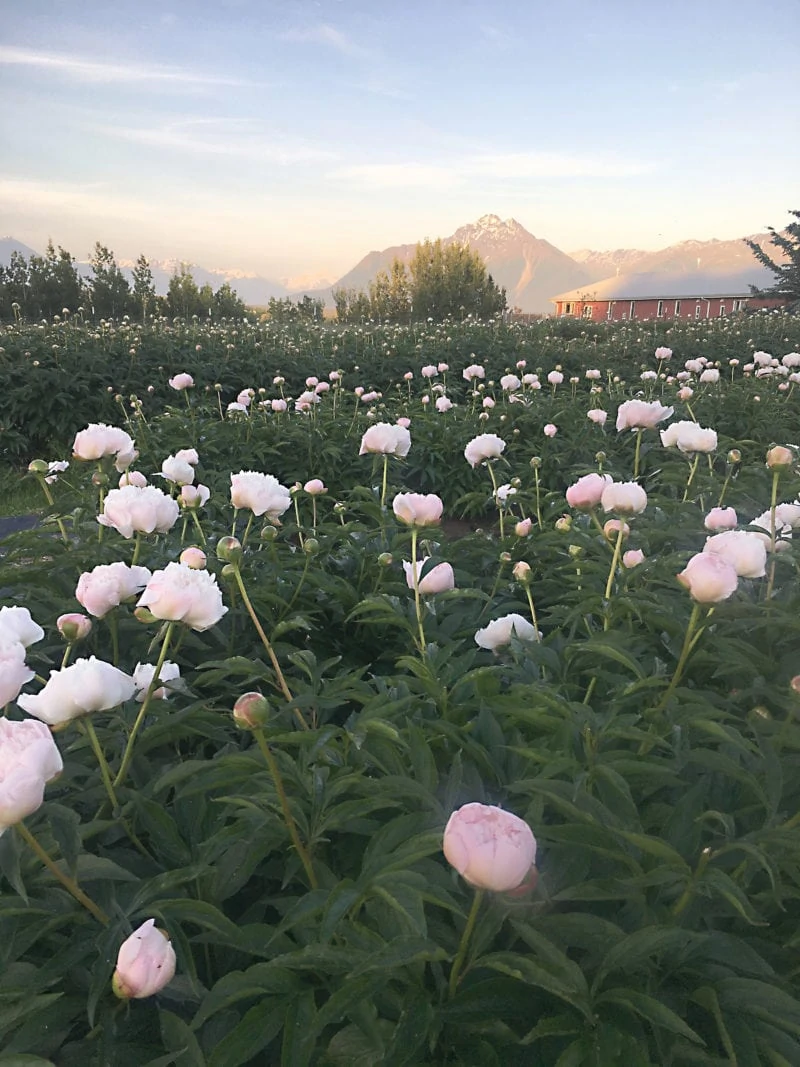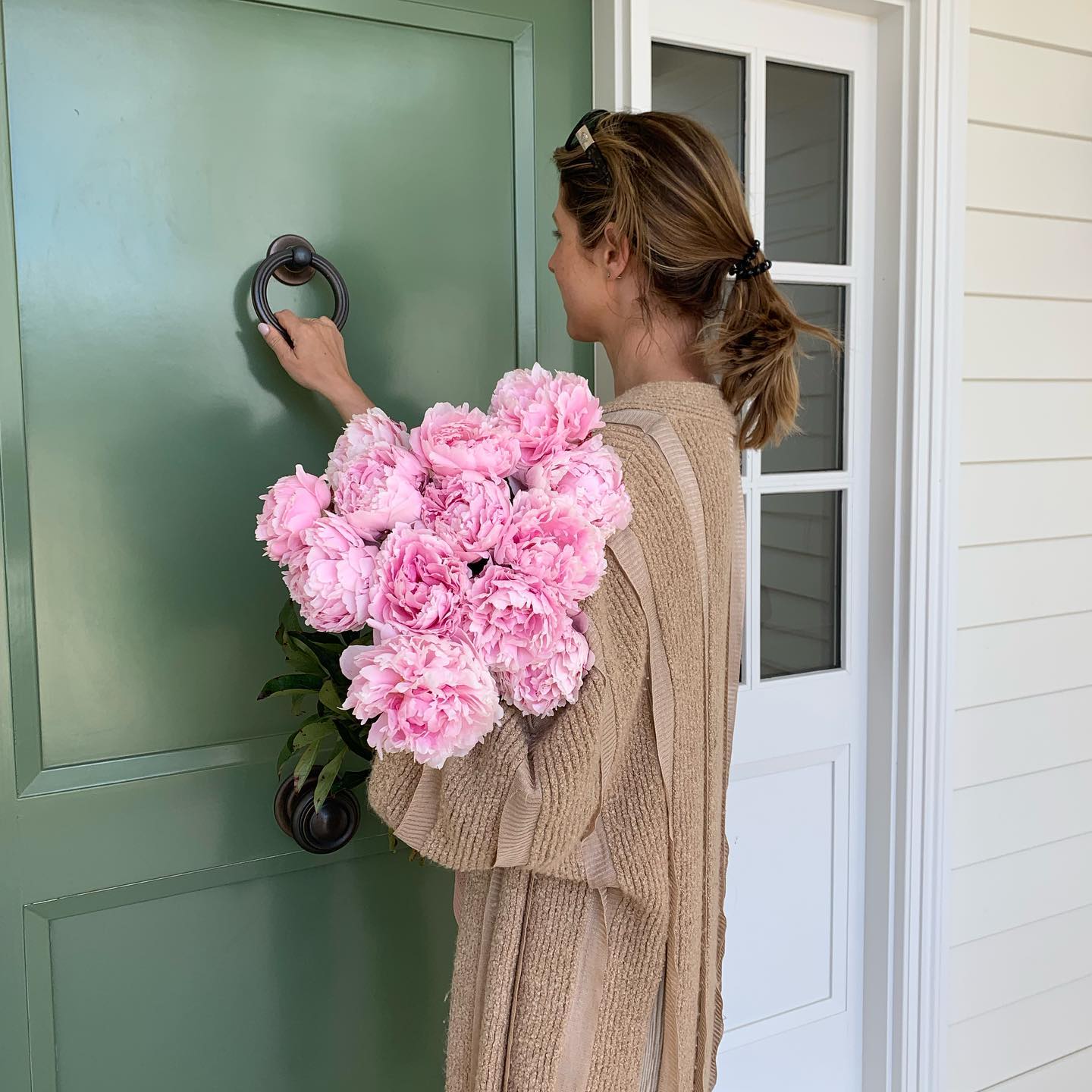A recent article in Greenity, a Dutch trade journal, talked about peony growing. Quite interesting and as nearly all visitors to this site won’t be able to understand it as it’s written in Dutch, here’s our manual translation:
Growers’ cooperation. Drenthe, an important peony supplier.1
When talking about bulbs, Drenthe – a province in The Netherlands, has predominantly been associated with lilies, but many acres of peonies are also being grown there. Peony growing is done in an agricultural way, which isn’t surprising when you talk to the growers .
Once upon a time the centre of dry flower growing was in Smilde. During the nineties they were grown for local driers, but at the turn of the century demand for them had all but vanished. As that fashion, at its peak in the eighties, came to an end and growers had to look for alternatives. Eduard Daling from Smilde substituted his acreage and started growing summer flowers and peonies, thereby also inciting younger colleagues in the neighborhood. Daling still grows some flowers which he bunches himself.
Mid-May, whilst touring the peonies, he combines both the pleasant and the useful. There’s no cutting the peonies as yet, the buds are still too much closed. At nearly all plots the irrigation machinery is in full swing as the sandy, humus-rich soil is dry. He adjusts his sprinkler gun when he notices one corner of the plot is not receiving water. “Actually I wanted to grow lilies, just before I started with peonies,” the grower acknowledges. “ But I did not own enough land. Thus I chose peonies, in the beginning some 10 hectares (25 acres).”
No shortage of land.
Nowadays there are some 55 hectares (137 acres) of peonies around Daling’s two business locations, 20 ha (50) acres contracted with the remainder his own. He grows them both for their roots and for cutting. No longer is there any shortage of land, together with his son Martijn he owns some 157 hectares (390 acres) of land and they also rent some. “In total we have some 160 hectares (400 acres) of flowers and perennials, from ornamental cabbage to sunflowers and from delphinium to phlox.
“There’s nothing better than your own land,” Daling says. He was lucky obtaining the land as he was earlier than the lily growers and prices were still low then. “This makes it easy to rent land, because we have something to offer in return.” This is a necessity because, apart from some 30 hectares (75 acres), all his own plots have already been used for peonies and one cannot return to the same plot. As the grower cares properly for his rented land, he is well regarded in the region and can always find new fresh soil. And what about those 30 hectares? “That’s a nice plot of land which I’ll keep for days when I really need them.”
Both ‘Sarah Bernhardt’ and ‘Dr. Alexander Fleming’ are growing strong. These so-called bread-and-butter varieties fit the farmer well: “I’m not looking for riskier exclusive varieties, there isn’t always enough demand. I try to listen to the market, see what growers in France, Spain, Israel and the USA do and pick varieties that are in the top ten of best peonies. We’re very picky about our offer and we don’t merely look at how beautiful they are.”
Expanding more is currently not the intention of father and son, at least for now. “We do want to optimize our crop growing.” Thus Daling substituted animal manure for chemical fertilizer, so as to grow as sustainable as is possible. “A good story with your product is getting ever more important and the environment also matters a lot.” A row of ‘Coral Sunset’ clearly shows what fertilizing does. The one row that accidentally did not receive any of it with the machine he had built has plants on average some 15 cm (6 inches) shorter. Daling fertilizes with this own mix, which he inserts into the rows themselves. “Works like a charm, the machine we had built for this will repay itself in no time.” So really no expansion then? “Perhaps we’ll decrease our contract growing somewhat to increase our own. In fact we’re currently at the edge of what we can do.”
Peony growers here can reinforce one another.
Peony grower Albert Joling from Maatschap Joling in Dwingeloo grows some 40 hectares (100 acres) of peonies. Albert knows Martijn Daling well and through Daling he got his peonies. Joling also grows them agriculturally, as he does with lilies (100 ha (250 acres)), tulips (30 ha (75 acres)) and strawberry plants (30 ha (75 acres)). “As an intern with Daling I obviously noted the fact that money was to be made with this crop. My first peonies I grew under contract for Daling. We can reinforce one another as growers. You let each have its fair share and we share knowledge and staff for example.”
He also grows peonies in Hungary, close to the capital Budapest. Those he sells locally in supermarkets. Peony growing there is only in its early stages. “I’d like to broaden my view, especially internationally. I have studied agricultural business management, I think it’s important to talk to the banks and that business management may come in handy if ever I’d like to do something else. Although peony growing is a marvelous job.”
A short while ago Joling also obtained some 10 ha (25 acres) of organic land, where peonies are also growing. He cannot be very enthusiastic about them yet. “Especially demand, as there is none,” he complains, “only promises, nothing more.”
At this small organic plot a small corner seems to be doing poorly. The white labels on the short rows tell what treatment has been used to combat ‘peony replant disease’. “This is our test field, but so far we have not been lucky in finding a cure for peony replant disease. Yet we do need to search further because twenty years from now fresh land may be in short supply. We need to find something.”
Unlike Daling, Joling doesn’t bunch flowers himself. Of his 40 ha (100 acres) half is contracted and the other half is his own. Of the latter some 10 ha (25 acres) are being cut whilst the remainder is for roots. “Staff is the limiting factor in cutting, it’s not easy to automate peony growing.” As with most peony growers the employees are mostly busy cleaning weeds. “When the buds are soft enough, we’ll start cutting. You can easily keep the harvest in cold rooms for a while.”
One plot of ‘Dr. Fleming’ will not be cut, a hail storm passed by. Holes in the leaflets, damaged buds and as a result lots of bud botrytis. “Tremendously regrettable, but what can you do? Sometimes it just happens.”
“Some more expansion should be possible.”
Dion Veninga from Veninga Hijken is some 10 km away from Daling, in Hijken. He has been in the company since 2010 and has been growing peonies since 2016. The company has some 30 hectares (75 acres) of peonies, 2 ha (5 acres) of which are for Dion himself. Next to that the company has 25 ha (62 acres) of tulips and 90 ha (225 acres) of lilies. “Our peonies are mostly contracted. This year we don’t do any cutting, last year we did. It’s all root growing now.”
It was Daling again who was the reason for growing peonies. During a meeting of grower consultants where Daling and Joling were also present, Veninga got interested in peonies. “We already work together with Joling for tulips and lilies. Peonies fit our labour needs well and, if it’s up to me, we’ll expand somewhat more.” As with his colleagues he’s able to recruit enough employees for the job.
Veninga goes at an easy pace and chooses mostly bread-and-butter varieties. “First we build up good stock, with some contract growing. It’s quite exciting, I can see the market growing, although I do fear oversupply is around the corner for the roots. Last year for example we couldn’t cut all our flowers and therefore we offered more roots than initially imagined.”
At a large plot some 2 km away from the company, a city bus is parked and cutting is being done with a harvesting line. The peonies are standing in neat, efficient blocks. Carefully the employees pick the soft buds, but not for Veninga himself. “The contractor has sold them.” If Veninga cuts peonies, they are sold in crates. An automated bunching machine is still too expensive.
“One can easily start here, in Drenthe,” Veninga concludes, “I think it’s the strong, humus-rich soil. There’s still lots of land where no peonies have grown and there are many large plots, we like that.”
Footnotes:- Van der lee, Hans & Jan Anninga. “Samenwerking telers. Drenthe belangrijke pioenenleverancier. In: Greenity, nr 52, June 7, 2019, pp. 52-54.[↩]

























